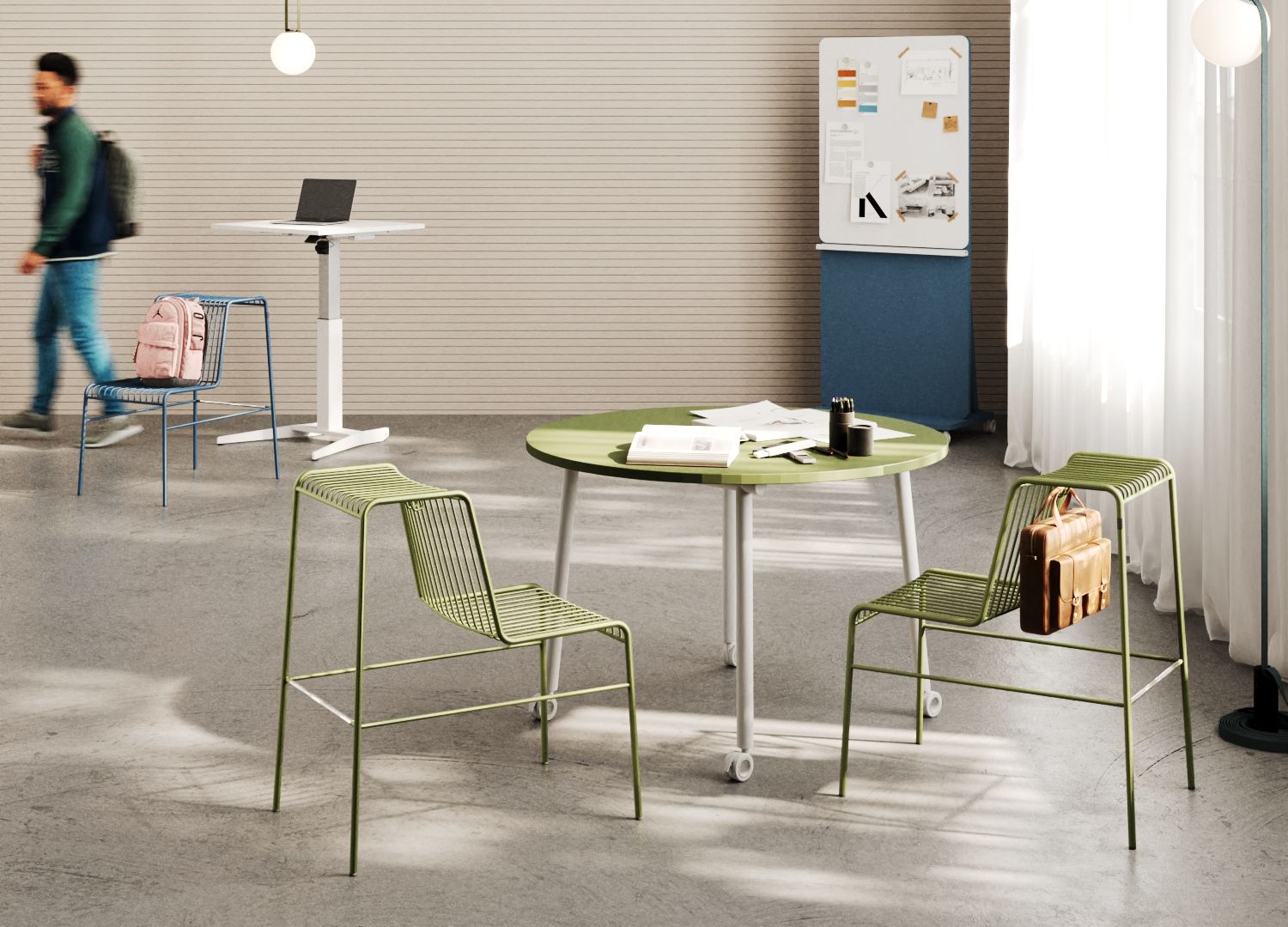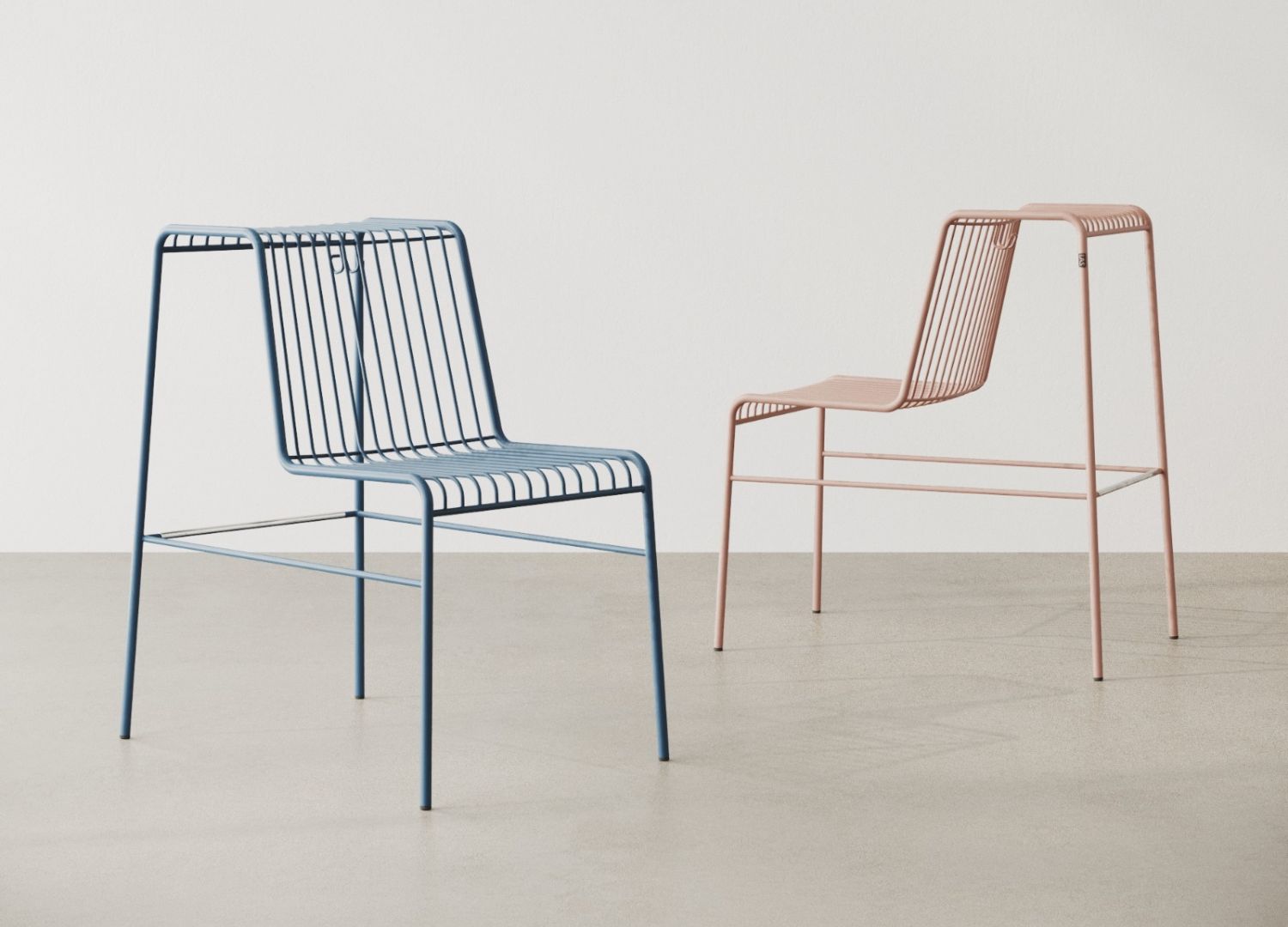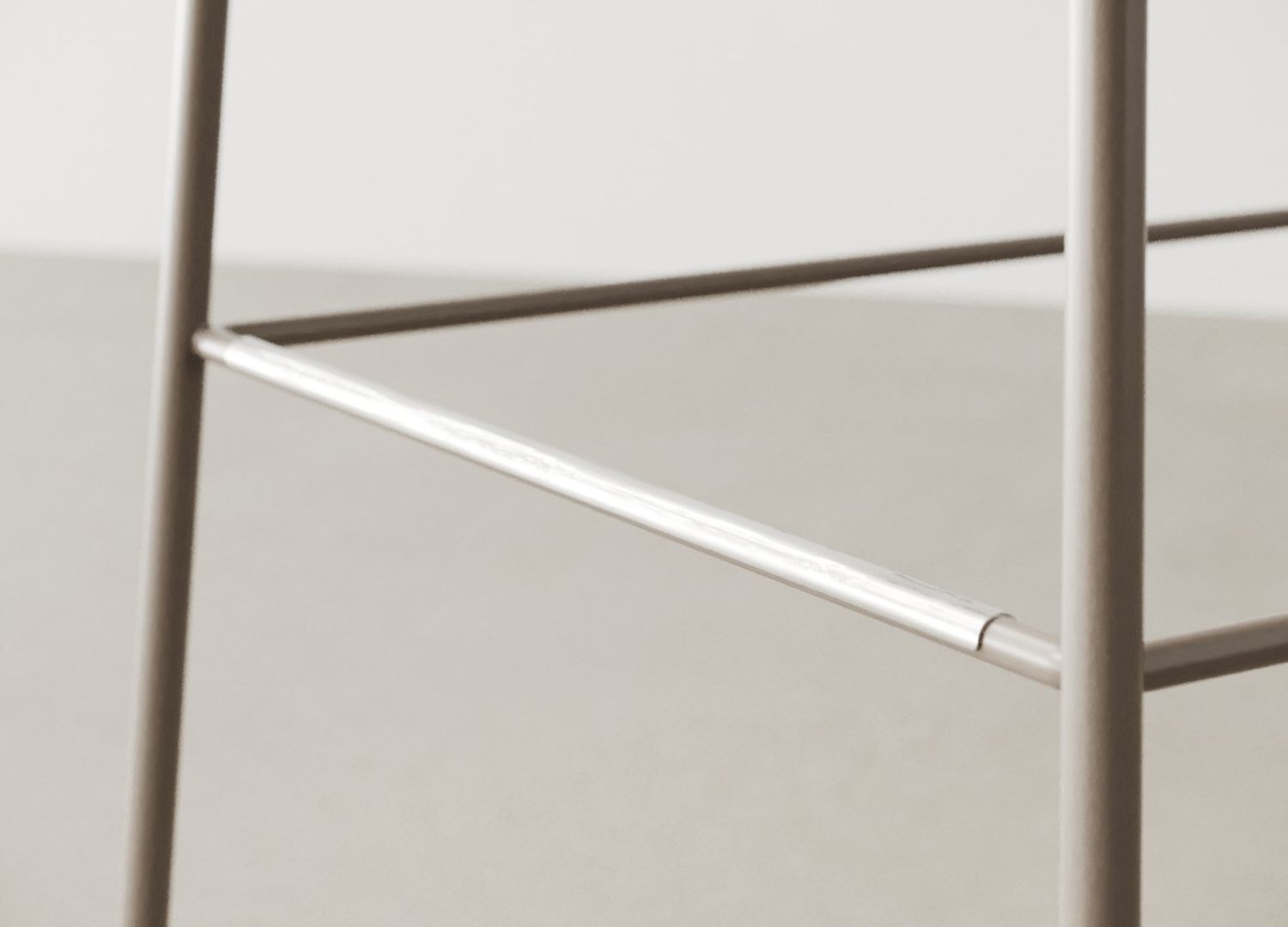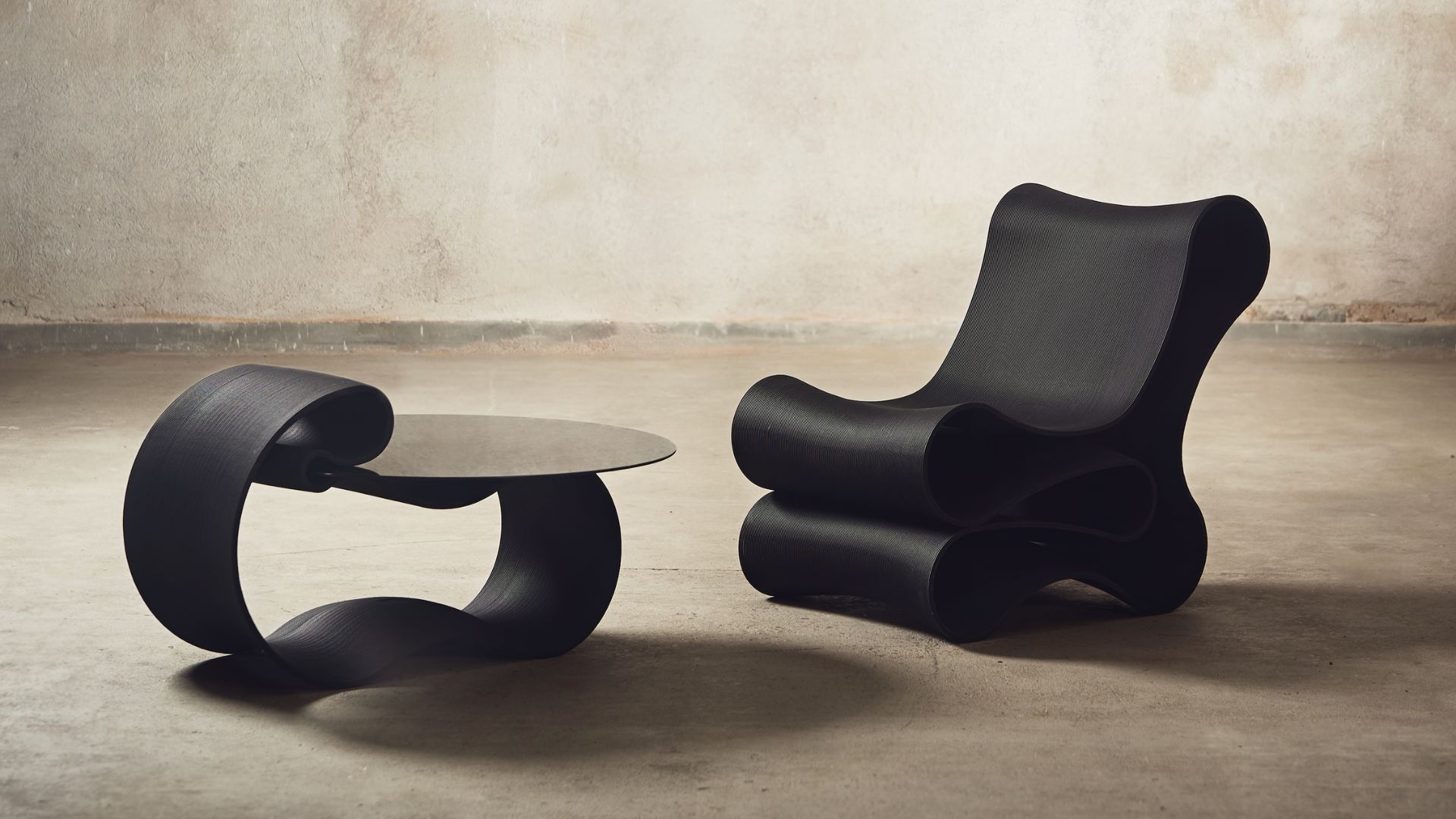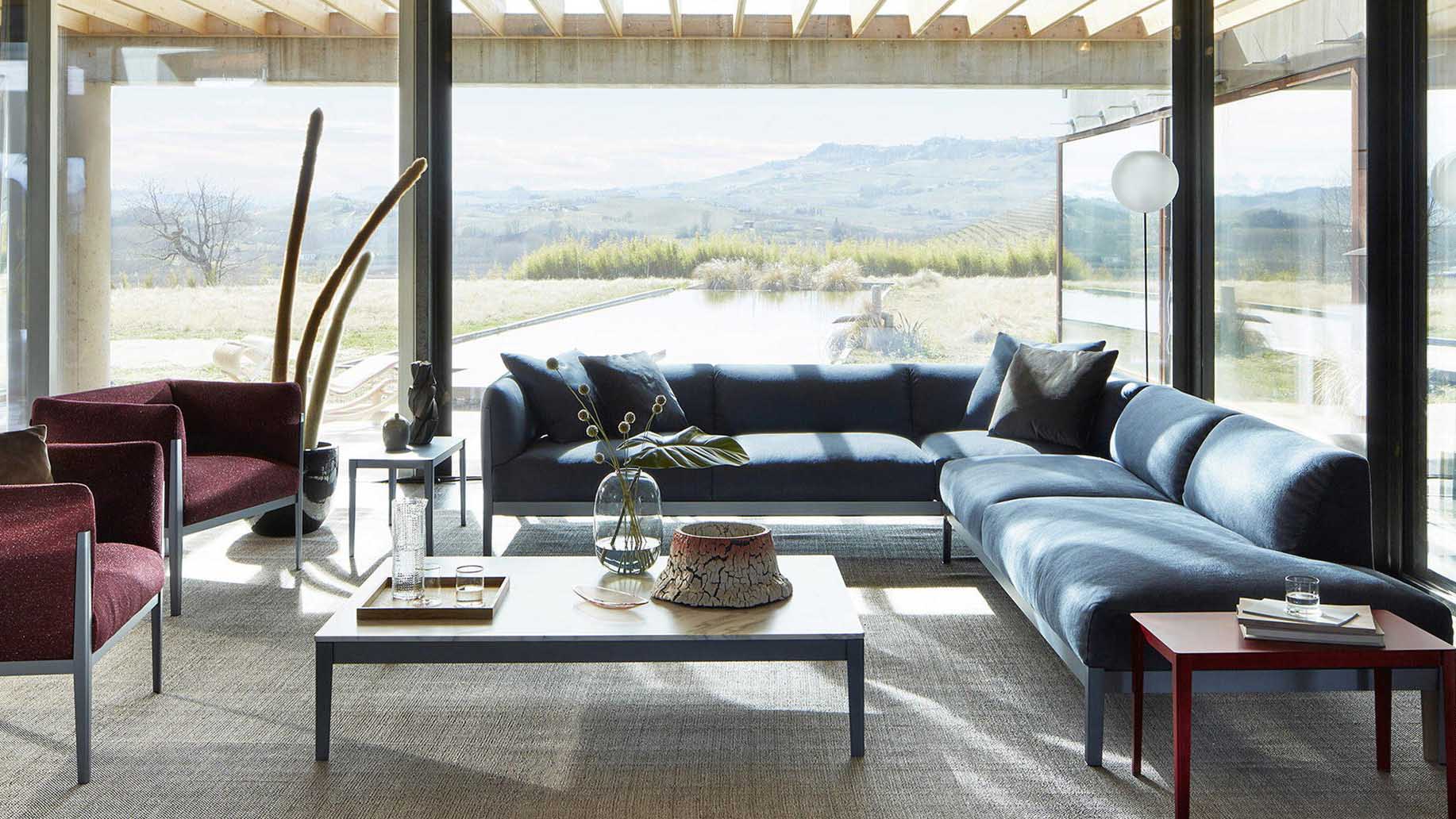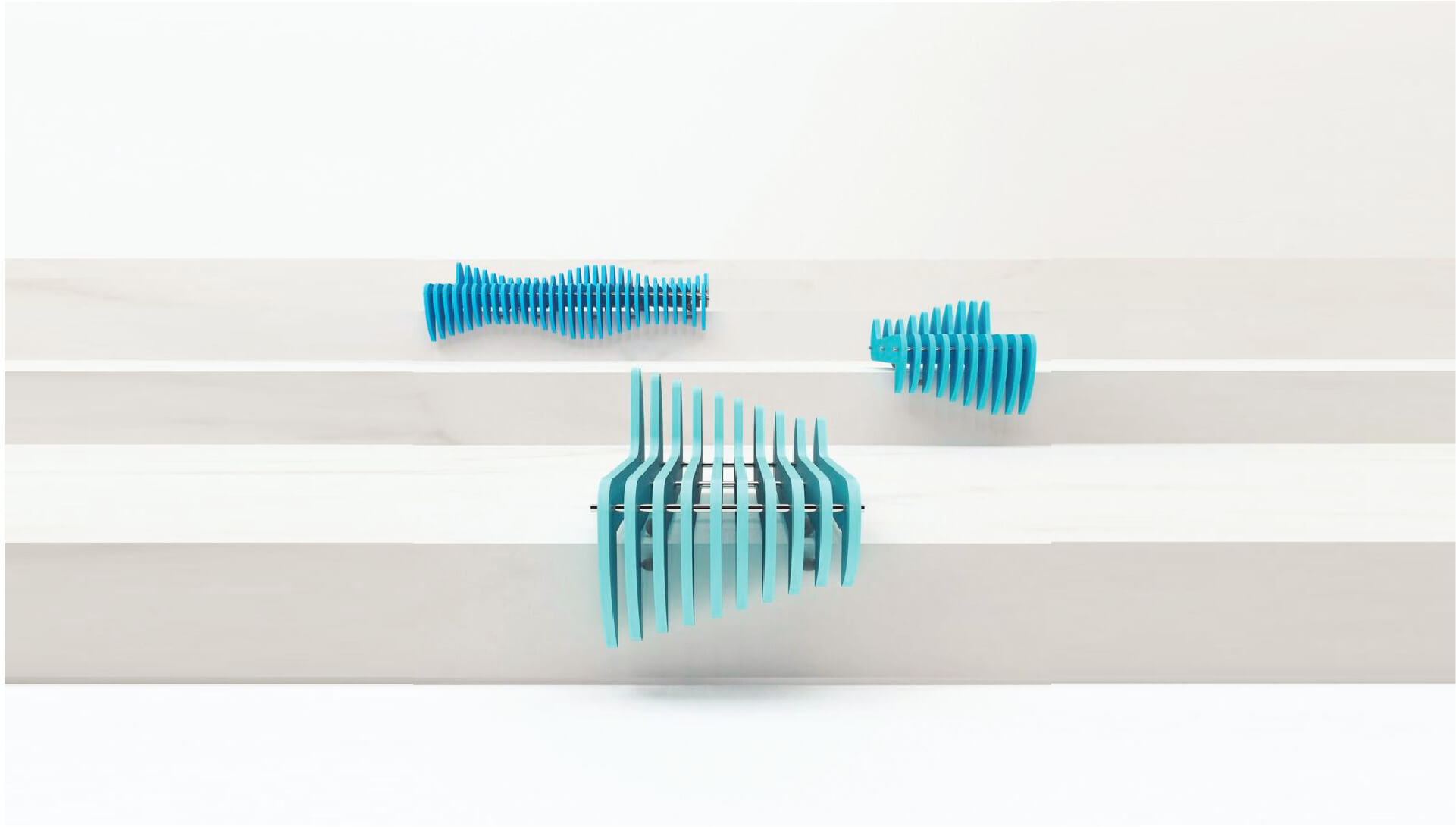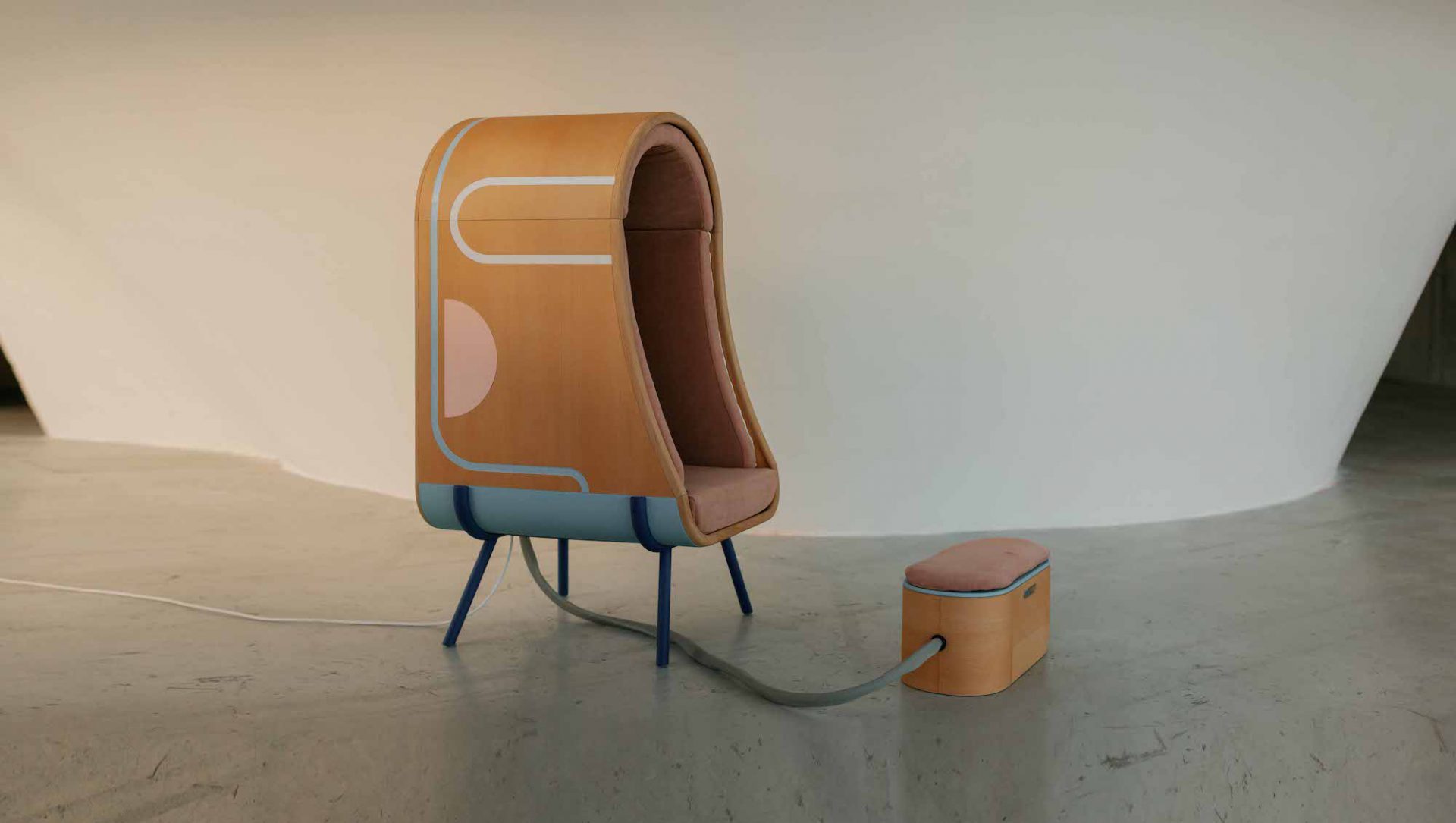Multifunctionality – another way to promote sustainable design
Created by Antonio Lanzillo & Partners for LAS Mobili, the Sello chair+stool embodies the evolving trends in interior design, where the need for originality and multifunctionality in spaces is increasingly evident.
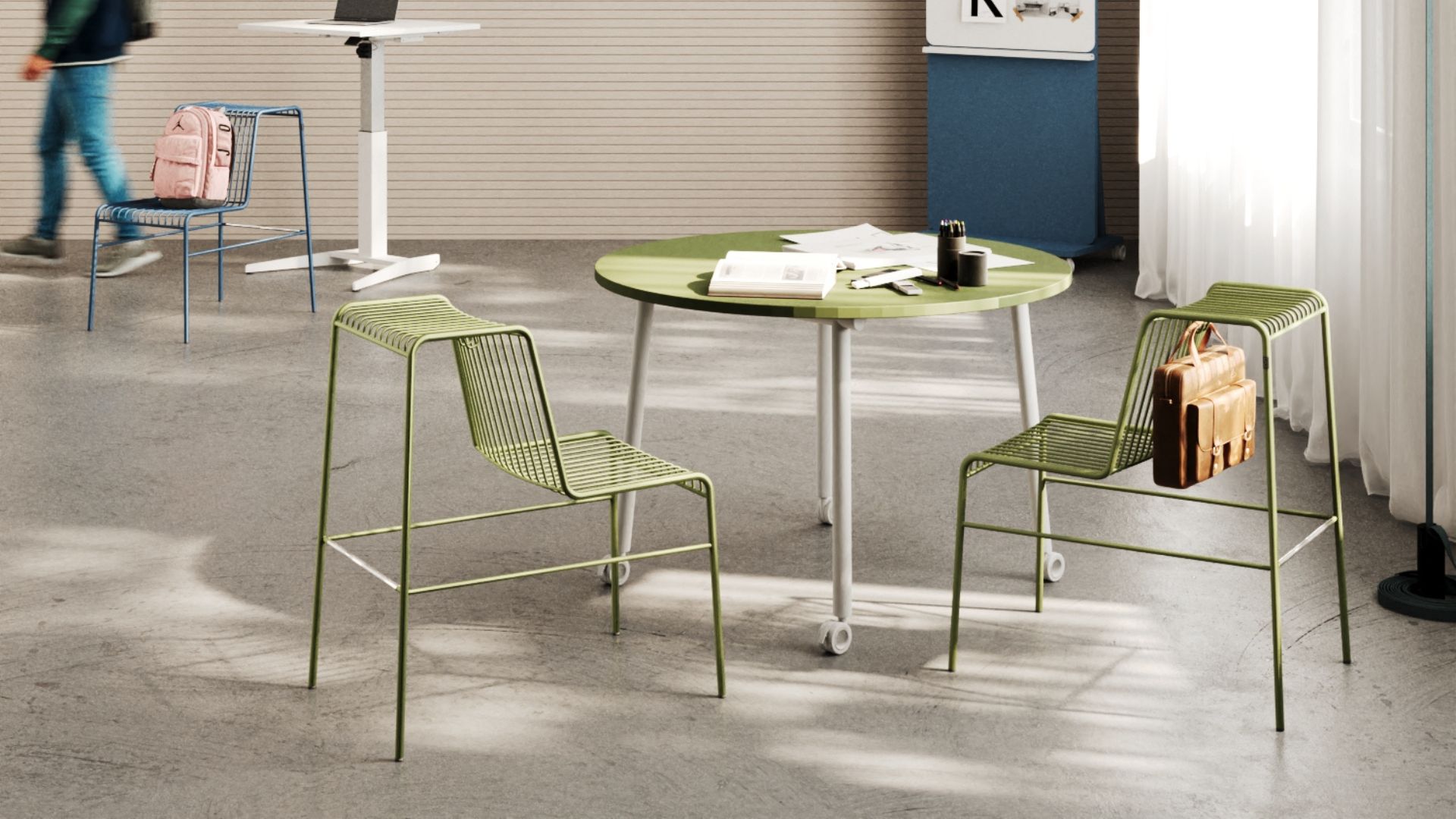
Sello merges a chair and a stool into one innovative product. Designed by Antonio Lanzillo & Partners, Sello combines the versatility of a traditional chair with the practicality of a stool that includes a footrest. It is designed to be lightweight and portable, featuring a convenient hook for hanging bags and backpacks.
This initiative is a collaboration with the Italian company LAS Mobili, which has been creating office furniture since 1976 with the aim of improving the quality of life in workplace environments. Guided by this ethos, the design studio embarked on creating SELLO, aligning with major trends that seek to establish new product categories through multifunctionality.
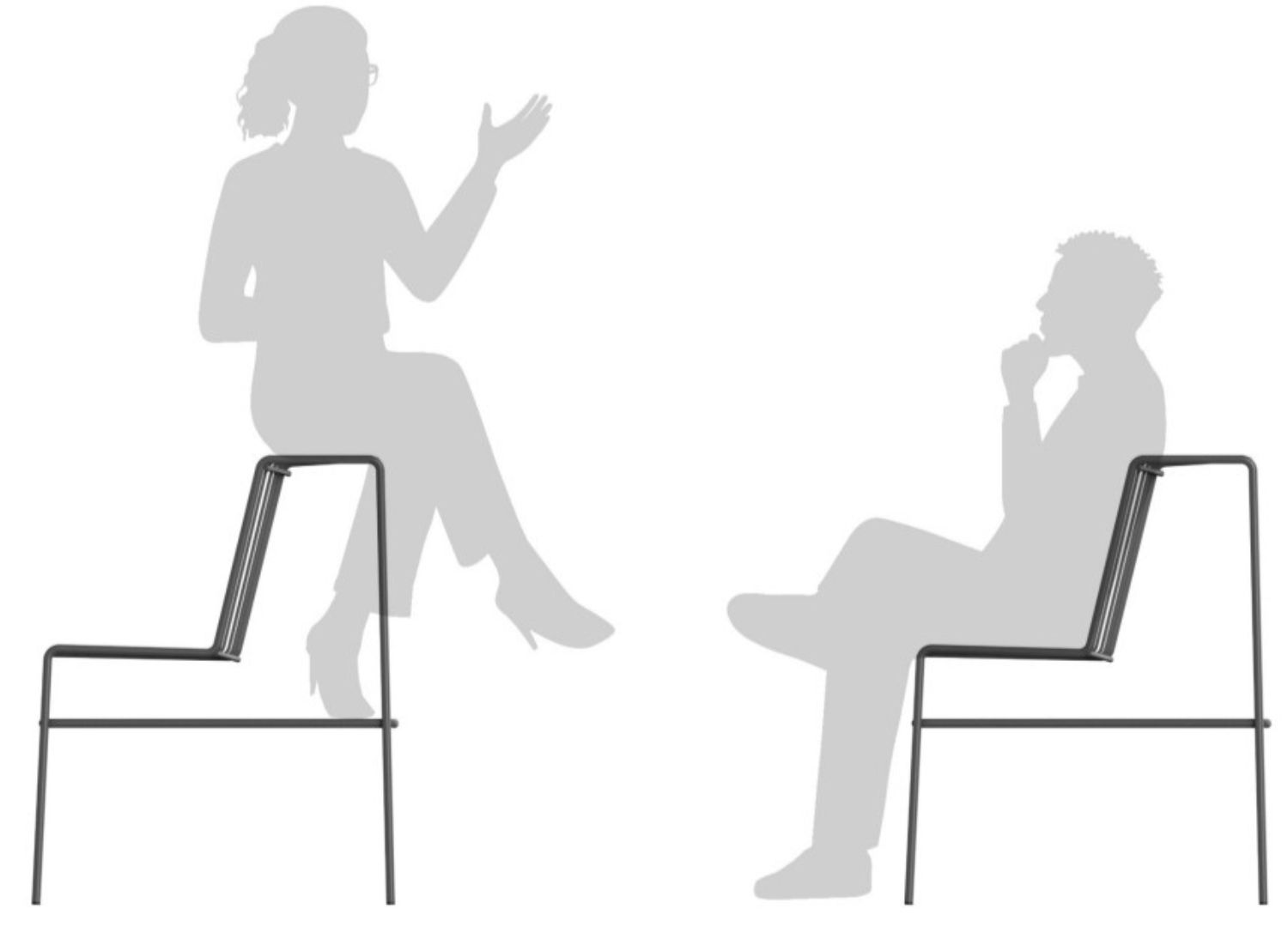
This approach not only reiterates a commitment to sustainability but also reduces the need for multiple products by combining functionalities. As a result, it minimizes waste and environmental impact, while providing users with the flexibility to personalize their use of the product.
How was the name of the product created, and in your opinion, how significant is proper naming for a new design?
Antonio Lanzillo:
“I wanted to create a simple name that fully represented the innovation of the project, and spontaneously it was born by merging the Italian words for chair (sedia) and stool (sgabello). The goal was to create a name that would identify both the product itself and the new type of multifunctional product that Sello represents, namely a seat that combines a chair and a stool into a single product. We thus combined the letters “SE” from sedia with the letters “LLO” from sgabello, thus coining the name SELLO.”

Why did you choose to design a product that functions both as a chair and a stool? What market insights or observations led to this decision?
Antonio Lanzillo:
“I decided to design a product that serves as both a chair and a stool, driven by my continuous pursuit of innovation and my fascination with multifunctionality and complexity management in products. The concept for Sello emerged during a brainstorming session aimed at creating new products. It started with the simple phrase: “chair + stool?” which I quickly jotted down to remember. Captivated by this challenge, my team and I then went on to develop it further.”

What sustainability measures did you implement, and what were the reasons behind those choices?
Antonio Lanzillo:
“Our product combines two distinct functionalities into one, offering significant savings on materials and resources. It’s designed to be compact while providing ergonomic comfort, serving both as a traditional chair and as a stool with a footrest.”
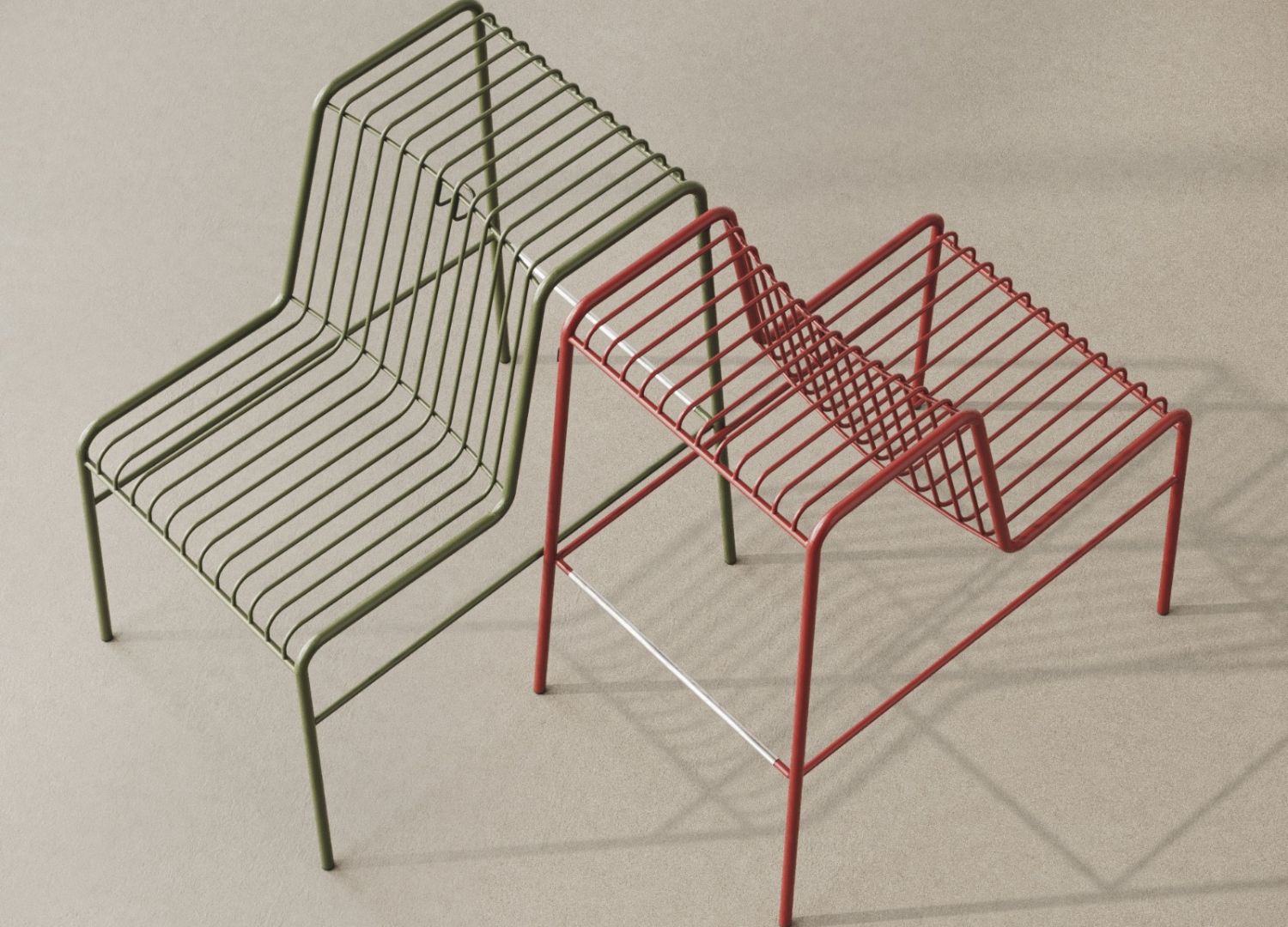
What approach did you take regarding CMF design? How did you work together with the company in this area?
Antonio Lanzillo:
“Our approach to CMF was highly methodical and aligned with the company’s standards. We collaboratively selected a technology that, while not heavily demanding in terms of investment, delivered excellent performance and facilitated the creation of form, structure, and lightness. We used electro-welded and painted rebar technology.”
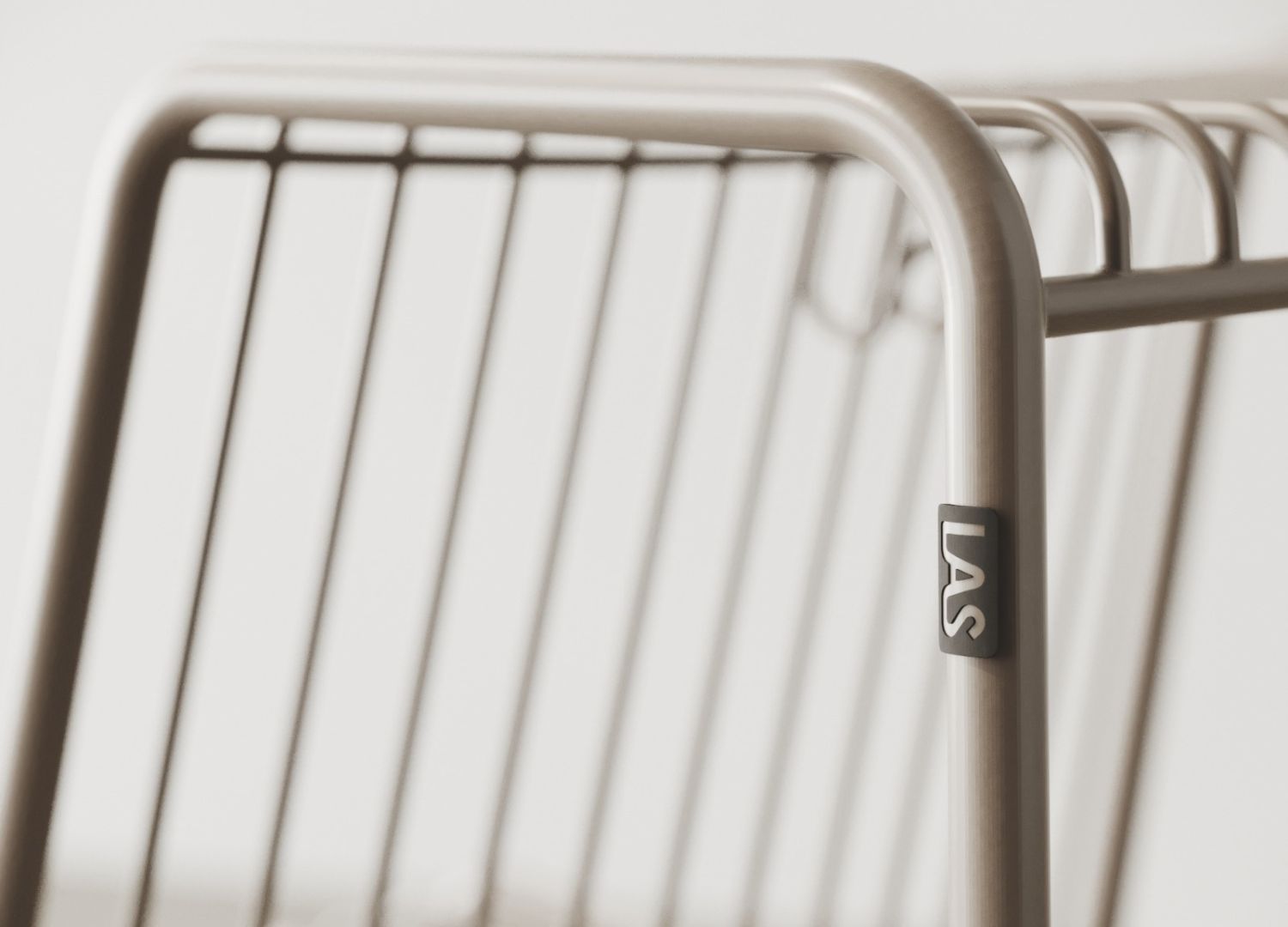
In a furniture design market flooded with chairs, stools, and armchairs, what criteria do you believe should direct new projects in this field? Why is this important?
Antonio Lanzillo:
“I believe that the development of new chairs, stools, and armchairs should adhere to principles of functional innovation, technological advancements in production, and sustainability regarding the resources employed in their creation. Additionally, these designs should focus on the well-being they promote for users. This approach is crucial for advancing the diversity of products available in the market and for introducing innovative, contemporary, and attractive product solutions.”






